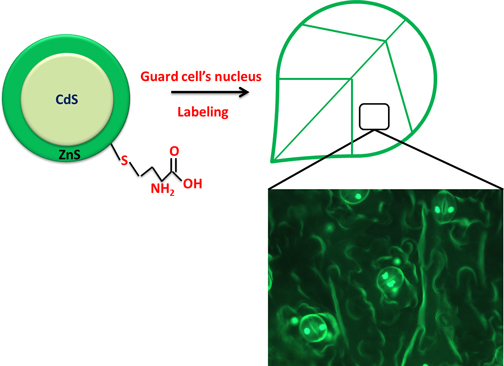Crossref Citations
This article has been cited by the following publications. This list is generated based on data provided by
Crossref.
Zhan, Zi-Jun
Ma, Li
Li, Jian-Fei
Zhang, Yu-Qin
Liu, Chun-Xiang
Zhang, Rui-Rui
Zeng, Xiang-Yu
Cheng, Chuan-Fu
and
Cheng, Chen
2020.
Two-photon pumped spaser based on the CdS/ZnS core/shell quantum dot–mesoporous silica–metal structure.
AIP Advances,
Vol. 10,
Issue. 4,
Rahimi, Fatemeh
Anbia, Mansoor
and
Farahi, Mohadeseh
2021.
Aqueous synthesis of L- methionine capped PbS quantum dots for sensitive detection and quantification of arsenic (III).
Journal of Photochemistry and Photobiology A: Chemistry,
Vol. 417,
Issue. ,
p.
113361.
Omran, Basma A.
Whitehead, Kathryn A.
and
Baek, Kwang-Hyun
2021.
One-pot bioinspired synthesis of fluorescent metal chalcogenide and carbon quantum dots: Applications and potential biotoxicity.
Colloids and Surfaces B: Biointerfaces,
Vol. 200,
Issue. ,
p.
111578.
Tsolekile, Ncediwe
Parani, Sundararajan
Maluleke, Rodney
Joubert, Olivier
Matoetoe, Mangaka C.
Songca, Sandile P.
and
Oluwafemi, Oluwatobi S.
2021.
Green synthesis of amino acid functionalized CuInS/ZnS- mTHPP conjugate for biolabeling application.
Dyes and Pigments,
Vol. 185,
Issue. ,
p.
108960.
Rashid, Muhammad Haroon
Koel, Ants
Rang, Toomas
Nasir, Nadeem
Sabir, Nadeem
Ameen, Faheem
and
Rasheed, Abher
2022.
Optical Dynamics of Copper-Doped Cadmium Sulfide (CdS) and Zinc Sulfide (ZnS) Quantum-Dots Core/Shell Nanocrystals.
Nanomaterials,
Vol. 12,
Issue. 13,
p.
2277.
Amin, Faheem
Ali, Zulqurnain
and
Korotcenkov, Ghenadii
2023.
Handbook of II-VI Semiconductor-Based Sensors and Radiation Detectors.
p.
385.
Al Murisi, Mohammed
Tawalbeh, Muhammad
Al-Saadi, Ranwa
Yasin, Zeina
Temsah, Omar
Al-Othman, Amani
Rezakazemi, Mashallah
and
Olabi, Abdul Ghani
2024.
New insights on applications of quantum dots in fuel cell and electrochemical systems.
International Journal of Hydrogen Energy,
Vol. 52,
Issue. ,
p.
694.
Kaur, Jaspreet
Pathak, Shubham
Renu
Singh, Bhupender
Paulik, Christian
Kaushik, Anupama
and
Singhal, Sonal
2024.
Development of biocompatible dualistic probe based on methionine capped MoS2 QDs for selective sensing and annihilation of persistent organic pollutants.
Microchemical Journal,
Vol. 200,
Issue. ,
p.
110385.



